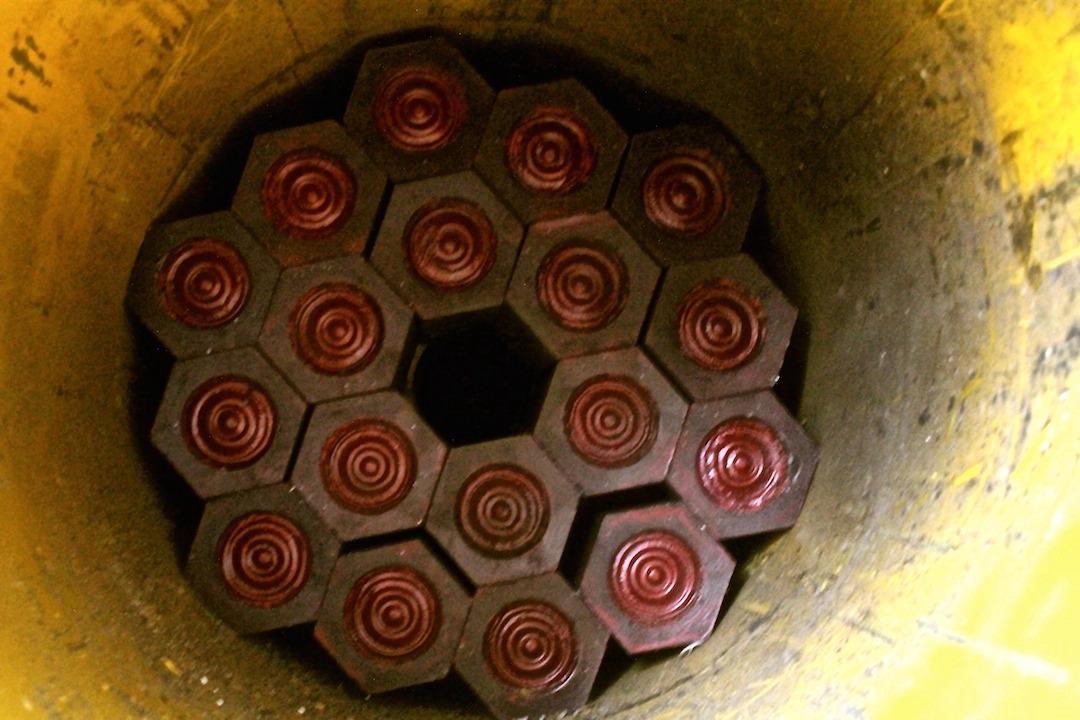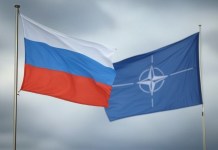A terrifying video filmed by a drone is doing the rounds on social media, showing hundreds of fiery sparks raining down on a village in the eastern Ukrainian region.
China Not Repeating Nazi Germany’s Mistake; USAF General Says ‘No Nation In Their Right Mind’ Would Want To Fight Beijing
China Conducts ‘Hypersonic Bombing’ As Scientists Evaluate Aircraft’s Ability To Fire Weapons At Mach 5+ Speed
The drone footage has been geolocated to the northern part of Ozerne, a village in the Donetsk Oblast.
Ozerne was among the areas retaken by the Ukrainian forces on September 4, along with the neighboring town of Yampil, as part of Kyiv’s surprise northern counteroffensive earlier this month.
russian 9М22С incendiary shells falling on the recently liberated village of Ozerne in the Donetsk region. pic.twitter.com/wVTYGrgSv0
— Defense of Ukraine (@DefenceU) September 20, 2022
According to the Ukrainian Ministry of Defense (MoD), the Russian forces carried out the attack using incendiary munitions against flammable targets and personnel.
“Russian 9М22S incendiary shells falling on the recently liberated village of Ozerne in the Donetsk region,” said the Ukrainian Defense Ministry in a tweet.
Incendiary Weapons
The 9М22S is a variant of the 9М22 122mm high explosive fragmentation (HE-FRAG) rocket fired using the BM-21 Grad multiple launch rocket system (MLRS) and similar systems.
It was reportedly developed by the Splav State Research and Production Association in 1971.

Instead of the HE-FRAG warhead of the basic 9М22 rocket, the 9M22S missile carries the ‘9H510’ warhead, which consists of 180 un-fuzed incendiary elements, which are hexagonal prism shells made out of a magnesium alloy, ‘ML5’, filled with a mixture similar to the one used in ‘Thermite’ munitions.

Thermite is another type of incendiary comprising powdered aluminum metal and ferric oxide. Thermite and Magnesium are known to burn at a temperature of around 2000 degrees centigrade.
The incendiary elements are ignited on ejection by an ignition/expelling charge of six linear-shaped charges (LSC). Each piece is said to have a burning time of at least two minutes. The estimated total weight of the incendiary elements is 5.9 kilograms.
The purpose of the incendiary munitions is to destroy enemy equipment and manpower through mass fires by producing intense, localized heat that triggers the symptomatic combustion of nearby flammable material and other objects.
However, the Protocol III of the Convention on Conventional Weapons (CCW) forbids the use of incendiary weapons in regions with significant civilian populations because of the high humanitarian risks these weapons pose.
According to a 2020 Human Rights Watch report, incendiary weapons “inflict excruciating burns, sometimes to the bone, and can cause respiratory damage, infection, shock, and organ failure.”

Russia and Ukraine are known to have incendiary weapons; therefore, it cannot be said which side used these weapons in this incident. However, seeing how Ozerne was retaken by Ukrainian forces earlier this month, it is plausible that Russia is behind this attack.
According to several Russian sources, there was a similar incendiary attack on the city of Donetsk on July 23, allegedly conducted by the Ukrainian armed forces.
There are a number of videos showing what looks like incendiary munitions used on Donetsk tonight. https://t.co/uIOorlZ0ydhttps://t.co/8zAfGo7pI1 pic.twitter.com/Pz8JFgxqwm
— Rob Lee (@RALee85) July 23, 2022
Furthermore, incendiary weapons have been used in Ukraine since 2014.
Was Russia Defeated In Kharkiv?
The Ukrainian forces retook Ozerne as part of a surprise northern counteroffensive that witnessed tremendous success, forcing a hasty withdrawal of Russian troops from the Kharkiv region.
The Ukrainian President Volodymyr Zelensky, in his address on September 4, commended the battalion’s soldiers, which retook Ozerne and Yampil.
Ukrainian soldiers kicked the Russian trash out of Ozerne, Kramatorsk district, Donetsk region. pic.twitter.com/ZlVUQknUC4
— Jay in Kyiv (@JayinKyiv) September 4, 2022
However, the latest attack on Ozerne suggests Russian withdrawal was more of a tactical move rather than a strategic defeat, especially considering the Russian media reported the rapid Ukrainian gains at the time.
Particularly about the capture of Ozerne, journalists embedded with the Russian forces in Ukraine reported on September 4 that it was mere optics, as there was no accompanying footage of battles or photos with prisoners.
As per the account of the journalists, the Russian forces had already left, and the Ukrainian troops from the 15th Regiment of the National Guard and the 103rd Terodefense Battalion crossed the Seversky Donets River and entered the abandoned village of Ozernoye (Ozerne).
It is important to note that Ozerne was among the first areas retaken by Ukrainian forces, marking the beginning of Ukraine’s northern counteroffensive. Therefore it raises the question of whether it was indeed a ‘surprise attack’ for the Russian troops as reported.
Russian Telegram channels talked about a Ukrainian build-up in Kharkiv for over a month. It had gone unnoticed because of the hype surrounding Ukraine’s counteroffensive in Kherson that began in late July.
The Starshe Eddy channel (shared by Kots) posted about Ukraine reinforcing its positions in the Izyum front with reserves despite publicly hyping an offensive in Kherson. It also alleges that Ukraine continues infantry advances in Kherson without armor.https://t.co/d1pMySArsN pic.twitter.com/ZDkQaNfHMD
— Rob Lee (@RALee85) August 7, 2022
Another notable feature of the Russian narrative around Ukraine’s northern offensive is its consistent emphasis on how the Ukrainian forces outnumbered their Russian counterparts and, therefore, the Russian troops had to withdraw.
It is, therefore, plausible that the Russian military was aware of a Ukrainian build-up in Kharkiv for a possible counteroffensive. After assessing the size of the enemy force, it decided to make a tactical withdrawal to draw in a large number of Ukrainian forces and equipment, which could then be destroyed by heavy artillery shelling.
This would be very similar to what was observed in the case of strategic ‘Snake Island’ in the northern Black Sea, where Russian forces withdrew after a series of Ukrainian aerial attacks on the island.
#Ukraine: The Ukrainian Air force is still alive- seen here are two Ukrainian Su-27 striking Russian facilities on the famous Snake Island in the Black Sea, in remarkable footage filmed by a TB-2 drone.
As we can observe, there is serious damage. pic.twitter.com/ogN3gOU8uJ
— ?? Ukraine Weapons Tracker (@UAWeapons) May 7, 2022
Russia characterized its withdrawal as a “gesture of goodwill” to allow grain exports from Ukrainian ports. It was widely reported as Russia’s defeat by Ukraine, the Western governments, and the Western media.
#Ukraine: Yet more drama in the saga of Snake Island; this time it is the turn of Su-30SM jets of the Russian Naval Aviation force to hit the rock, presumably to destroy any equipment left behind.
However, unlike the Ukrainian Su-27 strike just weeks ago, 3 of 4 bombs missed. pic.twitter.com/eCA1oE8RIV
— ?? Ukraine Weapons Tracker (@UAWeapons) July 1, 2022
However, shortly after withdrawing, the Russian military conducted air strikes on the island when Ukrainian forces tried basing themselves.
- Contact the author at tanmaykadam700@gmail.com
- Follow EurAsian Times on Google News




